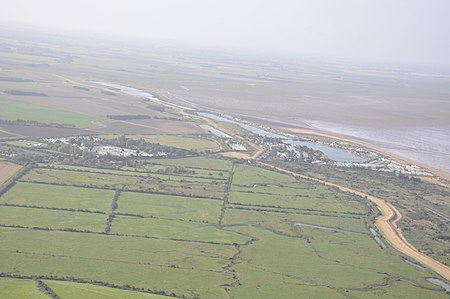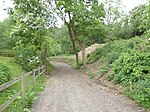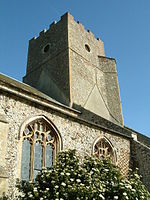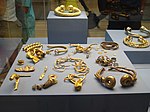Snettisham is a village and civil parish in the English county of Norfolk. It is located near the west coast of Norfolk, some 5 miles (8.0 km) south of the seaside resort of Hunstanton, 9 miles (14 km) north of the town of King's Lynn and 45 miles (72 km) northwest of the city of Norwich.The village's name means 'Snaet's/Sneti's homestead/village'.
The civil parish has an area of 28.03 km2 (10.82 sq mi) and in the 2001 census had a population of 2374 in 1097 households. For the purposes of local government, the parish falls within the district of King's Lynn and West Norfolk. The Civil Parish population had increased to 2,570 by 2011 and to 2710 in 2021.Snettisham RSPB reserve, on the coast of The Wash some 2 miles (3.2 km) to the west of Snettisham village, is a nature reserve in the care of the Royal Society for the Protection of Birds. It consists of bird lagoons and bird observation hides, including a rotary hide.
The Snettisham coast around the reserve is often said to be "where Norfolk stares at Lincolnshire". This is because, unlike much of Norfolk's coast where the sea stretches to the horizon, Snettisham looks across the square-mouthed estuary of The Wash at the county of Lincolnshire, only 15 miles (24 km) away. The River Ingol runs to the south of the village upon which stands the early nineteenth-century Snettisham watermill, now renovated as a holiday let.Though traces of the railway station and railway line can still be seen the service which was opened in 1862 was terminated in 1969.
St Mary's Church in the village has a 172-foot (52 m) high spire, a landmark for ships in The Wash. Nikolaus Pevsner called it "perhaps the most exciting 14th century Decorated church in Norfolk". It served as the model for the later Christ Church Cathedral in Fredericton, New Brunswick, Canada, built 1845–1853.
The Snettisham Hoard is a series of discoveries of Iron Age precious metal, including nearly 180 gold torcs, 75 complete and the rest fragmentary, found in the area between 1948 and 1973 at Wild Ken Hill. In 1985 there was also a find of Romano-British jewellery and raw materials buried in a clay pot in AD 155, the Snettisham Jeweller's Hoard. Although this latter find has no direct connection with the nearby Iron Age finds, it may be evidence of a long tradition of gold- and silver-working in the area.Snettisham has a complex entry in the Domesday Book of 1086, where it is divided in ownership between William de Warenne and the Bishop of Bayeux. Related berewicks are West Newton and Castle Rising, moreover Weston Longville is said to be in Snettisham's valuation. The name of the manor is spelt in four different ways, two very similar to the present pronunciation, one of Snesham and one of Nestesham.











